A few years ago in 2021, I rode the then-all-new 2021 Speed Triple 1200 RS at its UK launch and emerged with a sore back, tattered wrists, and a face you'd expect to see on someone with a mild concussion.
It was a stiff, unforgiving, and somewhat frustrating machine because it presented itself as a "street-first" roadster yet rode like a race bike set up for a man who'd need roughly three cows for a set of leathers. You didn't ride the first-generation 1200 RS, you braced and winced your way around with the same kind of fearful anticipation you experience when the doctor reaches for the latex gloves.
I vividly remember returning from the 100-mile road ride and enquiring as to which British Superbike racer set the suspension up and if he was available for a stern talking to. Granted, it made a bit more sense on track, but the conclusion back then was easy for most super-naked shoppers: S&M clubs are cheaper and more convenient, so if that's what you're into, save yourself the bother and just go to those instead.
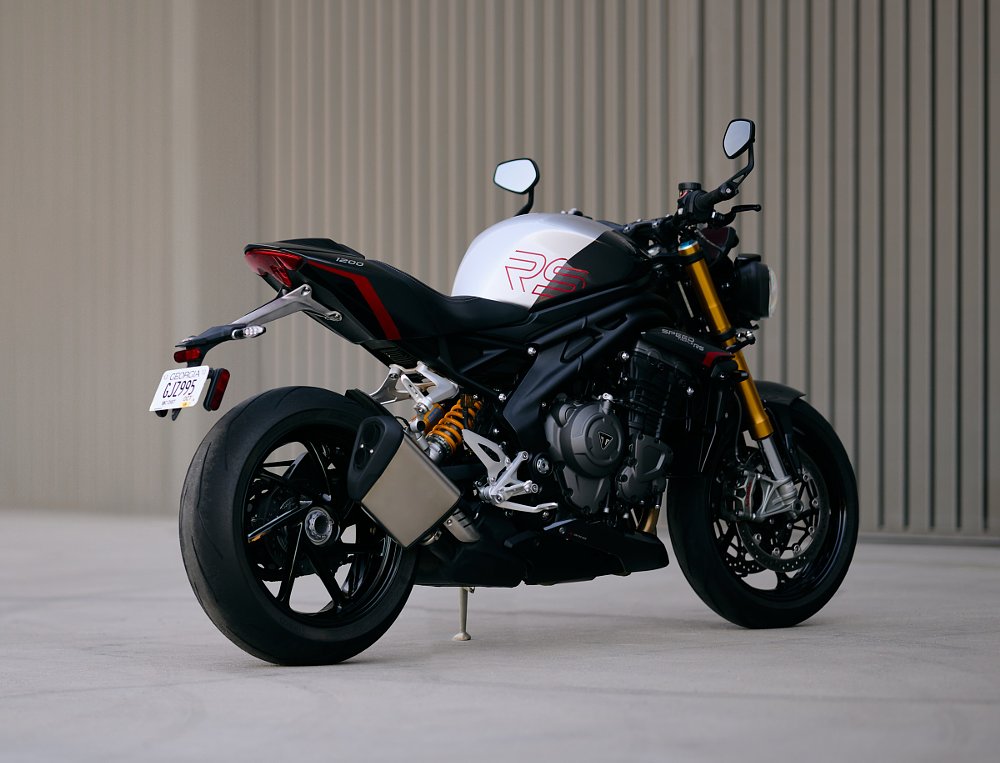
At the time, I felt that I was entirely correct in my assessment. In the bar that late-April evening, I imagined what I'd do to fix it: I'd bolt a half fairing onto it, remove 30 horsepower, relax the pegs and bars, and then do whatever to the bouncy bits to make them work nicely on the road. I'd sell it for around the same cash, high-five myself repeatedly, and consider it a job well done.
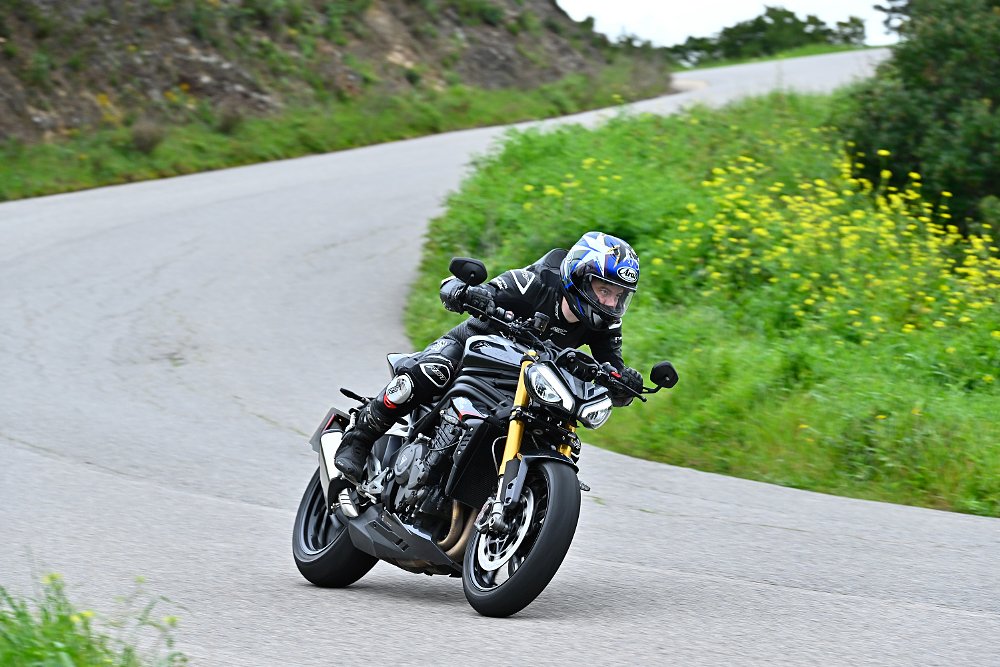
Fast forward to 2025 and, as it turns out, Triumph hasn't quite done that, and presumably because its Tiger Sport 800 was recently invented to do most of what I'd imagined earlier (ah-ha!). What Triumph has done, though, is remove the manually adjusted Öhlins suspension from 2021's Speed Triple 1200 RS, unceremoniously throw it into the nearest bin, and replace it with Öhlins' latest-generation SmartEC3 suspension. It has also added a manually adjustable steering damper for good measure. That, ladies and gentlemen, ought to make the difference. It's made some other changes, too — more on that in a second — but the overhauled suspension is the headline to pay attention to.
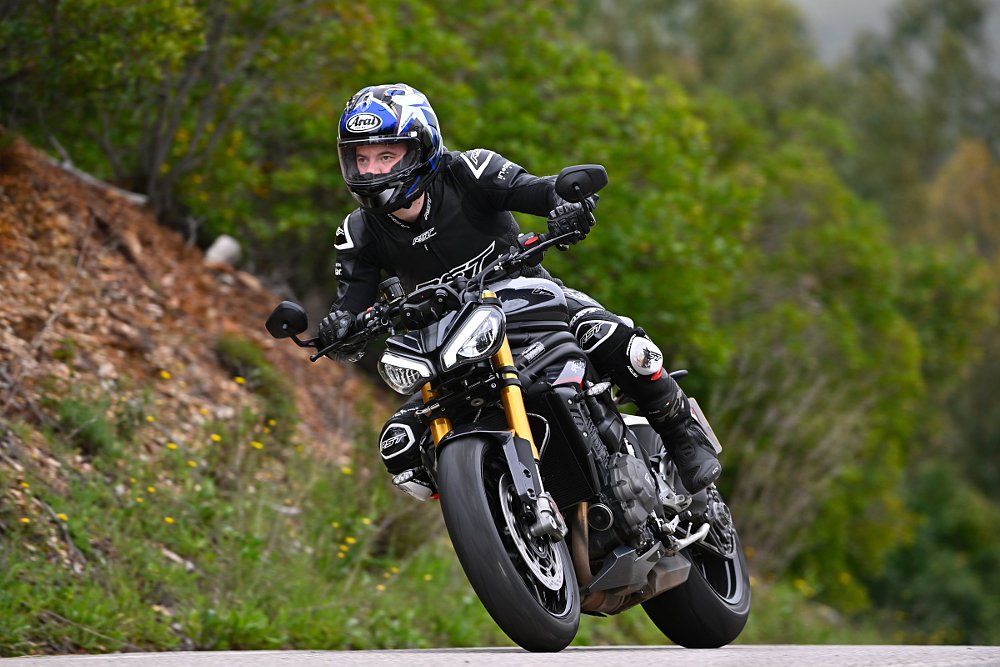
For the rest of the modifications, the 1,200 cc three-cylinder powerplant makes three more horsepower, bringing the total up to 180.5 bhp at 10,750 rpm. Fans of factoids will note the extra power makes it the British brand's most powerful production bike ever, and that wet weight is under 200 kilograms at 199 kg (439 pounds). Torque is increased by a smidgeon (94.5 foot-pounds at 8,750 rpm, up from 92) and arrives 250 rpm earlier across the rev range, which is something everyone should welcome. The extra horses were found lurking in the exhaust system, which is now freer flowing, 150 grams (five ounces) lighter and mounted lower down for mass-centralization reasons. Triumph has also decoupled the wheelie control function from traction control, which was a bug-bear of many on the generation-one model.
I pondered how many of these changes were internally roadmapped at Triumph versus how many came from customer feedback. Steve Sargent, Triumph's Chief Product Bod, let me know that the electronic changes (wheelie control) and all-round extra adjustability were pre-planned at Hinckley, but the suspension change was principally in response to customer and press feedback. I fully believe him, because we all said it.
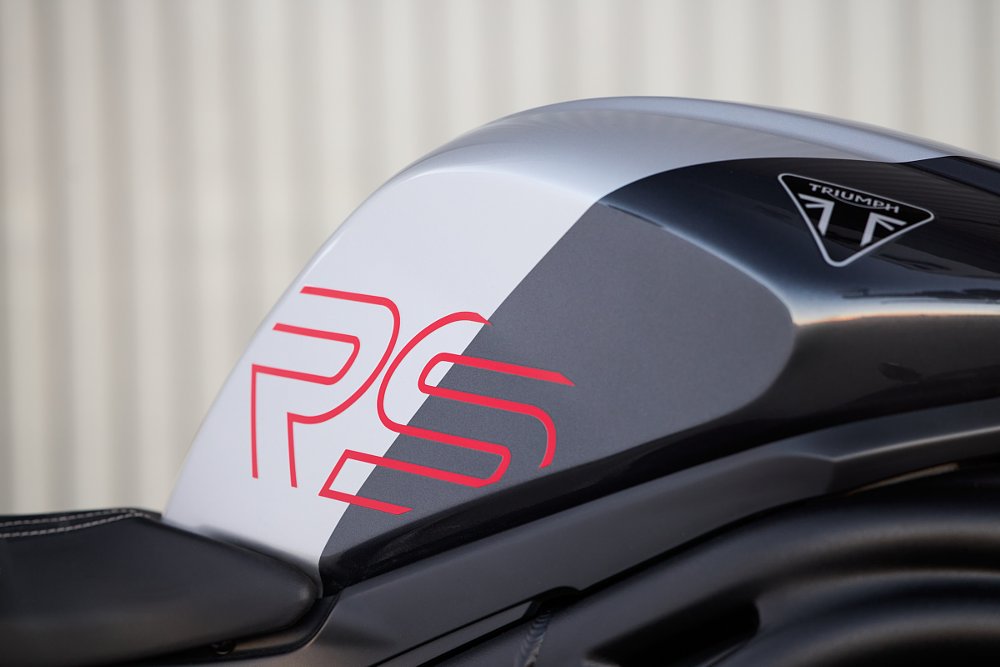
Extras, to sweeten the deal, come in the form of a new wheel design, a lighter li-ion battery, refreshed colorways, a neater looking pillion seat, plus an ever-so-slightly wider and higher-mounted handlebar position for comfort. There's also a few new accessories to be found in the catalog, the most significant of which being a snazzy looking Akrapovič end can which saves 1.5 pounds (700 grams). It's homologated for street use, too, so it shouldn't cause any issues with the powers that be.
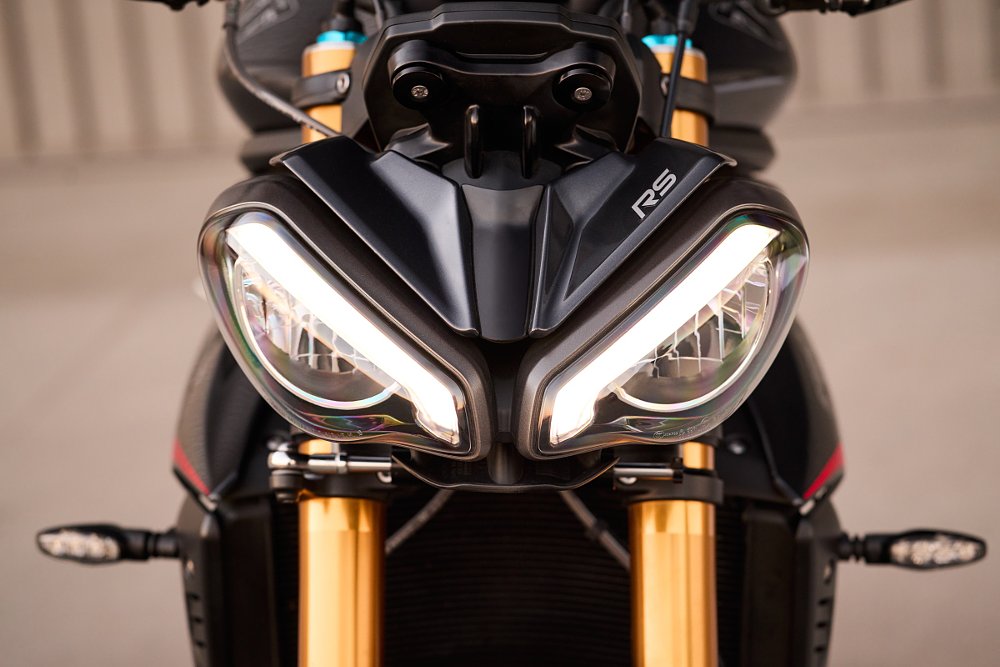
The annoying little stuff, the good basic stuff
Press-release talk out of the way, let's move onto what’s still wrong with it. The dash remains quite a pitiful affair. It's slow, confusing to use, hard to read at a glance, and there's more buttons than a Casio calculator by which to operate it (seven, if you want to know). And you will want to operate and navigate your way through it, because that new EC3 suspension, plus rider aids, has more adjustability than a Boeing 737. Quite why Triumph still can't make a dashboard and set of switchgear buttons that are a breeze to operate in a rush is truly one of life's greatest mysteries.
And then there's the keyless key-fob thing. I'm sure we all know the irritations there, but in case you’ve never had the (dis)pleasure, then they are things that you will inevitably lose, drop, leave in a bar, kick across a forecourt, drop into a toilet, or literally anything else you can imagine. And don’t get me started on the on/off/kind-of-on (or maybe off?)/start/stop rocker switch that Triumph still insists on shipping. There's a reason no one else has built a switch like it and that's because it's a bad idea. The upshot of all of this is every time you decide to head into the settings menus you will end up with the left indicator flashing, in the wrong menu unable to escape, all before turning the bike off. Accidentally. And that's if you've not managed to lose the fob to start with.
There's a lot to annoy, then, but there's much — when you realize just how much Öhlins' SmartEC3 electronic suspension transforms the bike — to enjoy. So, so much; and almost as much rain as Portugal had in store for us in our combined road and track test.
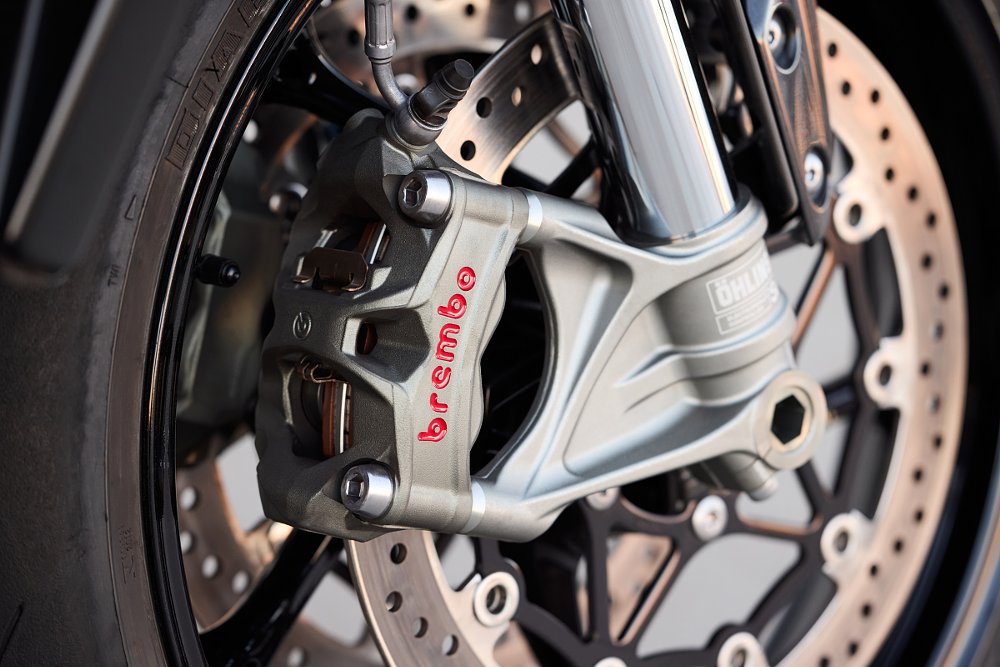
Nerdy suspension talk and a very soggy test ride
Much has been done to tune the suspension to what Triumph says is perfection. Stuart Wood, Triumph's Chief Engineer, explained that the semi-active EC3 kit as it comes from Öhlins is a blank canvas, oozing with potential but ultimately something that needs configuring all the way from nothing to a bunch of what are effectively suspension maps, working hand in hand with the suite of rider aids, IMU, and so on. What you're buying is a system so advanced that once you're done playing with the myriad "outcomes" it will allow you to fine-tune, you can even go as far as to plug your weight into it in order to get even more from it. This is hardware that only the likes of Honda's sharpest Fireblade and Ducati's highest-end Panigale and Streetfighter V4 models come fitted with, and those cost significantly more than the $19,995 that Triumph wants for this 2025 Speed Triple 1200 RS.
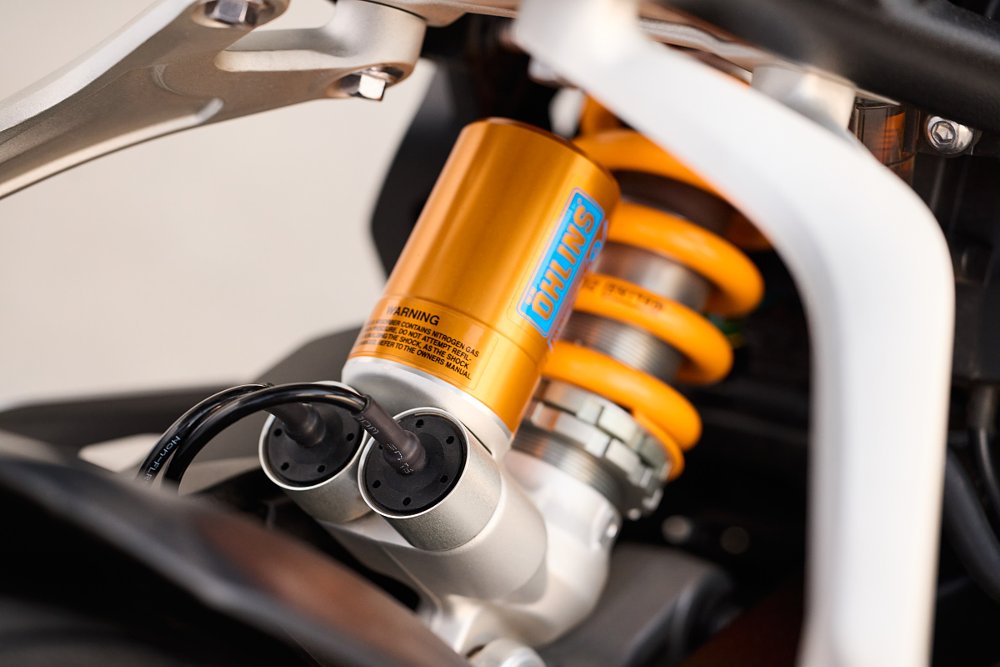
Allow me to nerd out for a moment. What's significant about the suspension is as follows: The EC3 suspension has "spool valve" technology. Without boring your pants off and losing you at this critical moment, it means the suspension can adjust itself up to seven times quicker than the EC2 kit, and 3.5 times quicker on average. And, of course, infinitely faster than the kit that came on the original 1200 RS, because that was manual. That speed matters because it means you can access the very extremes of adjustability fast enough to make them worth using. Previously, you had that capability, but you could never fully use it — not even close. Unless you could freeze time mid corner, get your spanners out, adjust to crazy levels, un-freeze time, exit corner and then do it all over again for when you're back on the gas to dial in the settings for that situation, you were literally paying for suspension ability you could never realistically use, which when you think about it is irksome. But now you can use it, which should please you greatly indeed.
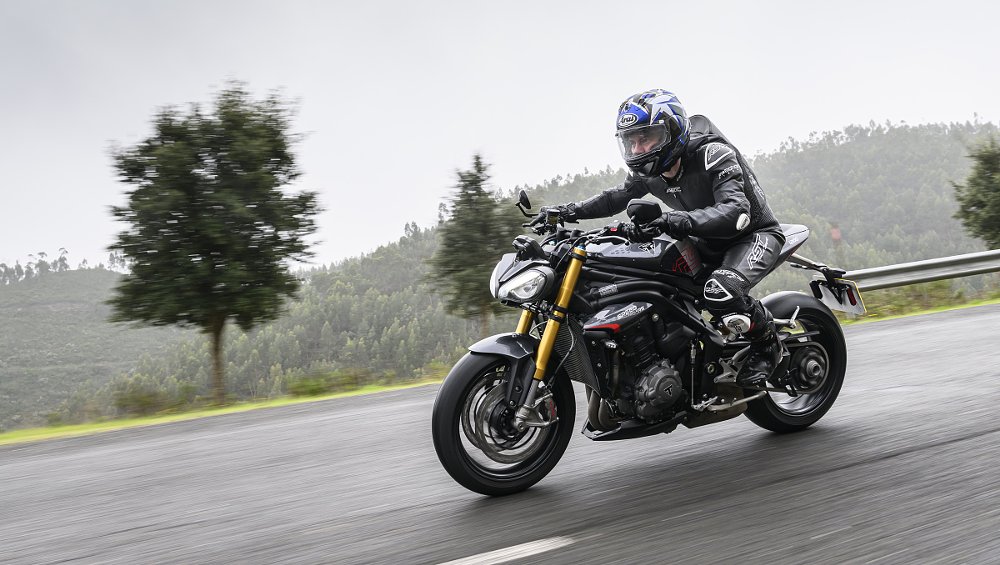
I did not get to ride the 1200 RS in the dry, and sadly nor did I really get to experience the super-quick adjustability of the suspension, or at least not fully, anyway. On the roads around southern Portugal, I barely even got out of third gear. I think I wiped my visor more than I changed gears. But with how well it worked in the wet — and how stupendously comfortable it was — I can believe it's beyond brilliant when there's no rain getting in the way and spoiling play.
At the very least, with comfort settings dialed right up to the rafters, I think I had a tiny, brief glimpse at what the system could do if it could be fully unleashed. I'd set the suspension to extreme comfort for cruising, and on straight roads when nothing much was happening, it was as soft and plush as could be imagined. Exactly what the doctor ordered. Combined with the excellent exhaust note, it was a happy place to be. It felt like a $20,000 bike. Bumps and ripples may as well not have existed, and yet the feel changed drastically as soon as a corner or something dynamic came our way. Within the narrow window of what conditions would allow us to experience, it gave off a premium and reassuring aura. And, just to back things up, a number of us stood back at coffee stops and decided we'd almost gotten confident on the entirely inappropriate-for-the-conditions V3 Pirelli Diablo Supercorsa tires. The fact that none of us ended up facing backwards in a hedge, or had even as much as a minor moment, despite the downpour, says a lot. We were almost enjoying the weather.
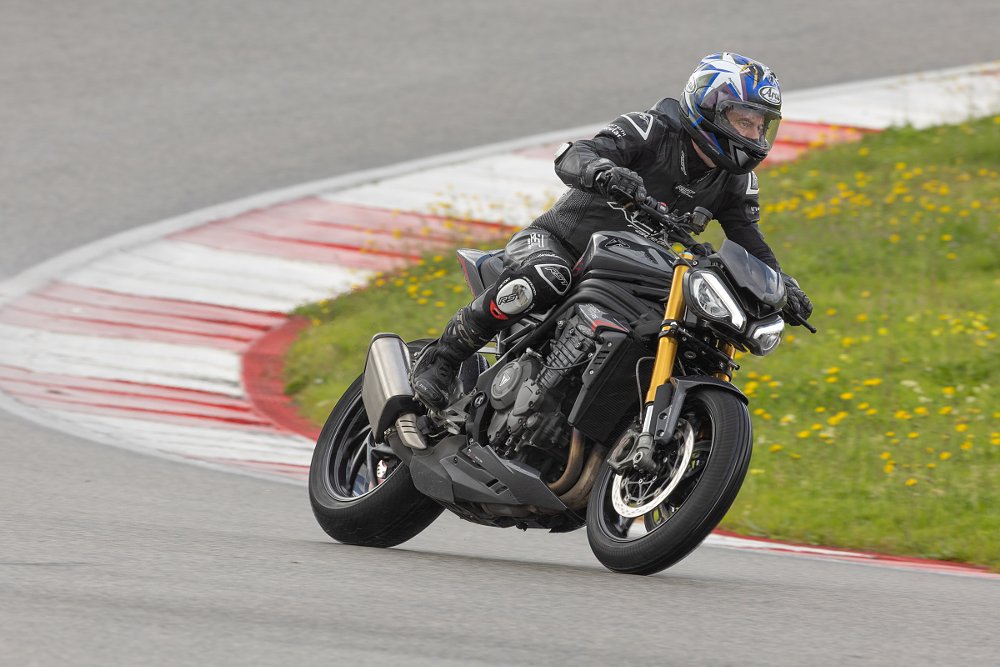
I must stress again that this was a brief tease of a glance at things, and just as the roads were cold, sopping wet, and greasy, the Algarve racetrack was sadly no better (or drier). All that could be done on the imposing, undulating race track was to lean a little harder on the electronics and marvel at how well it was set up out of the box. Full-wet tires helped, I'll admit, but it was a job to provoke misbehavior. I saw flickers of the traction control light, but I had no real perception that it was doing anything at all, which is how electronics should feel. It truly was a day when the folks who develop seldom-used rain mode throttle maps got some significant appreciation. Wheelie control was particularly impressive, and set in its most extreme setting allowed precisely no lift whatsoever, even at full gas over the crest onto the start/finish straight. Each of the four settings allows progressively higher amounts of front wheel lift, and Triumph says it has not yet seen a scenario where it'll allow you to fall off the back. I'll take their word for it.
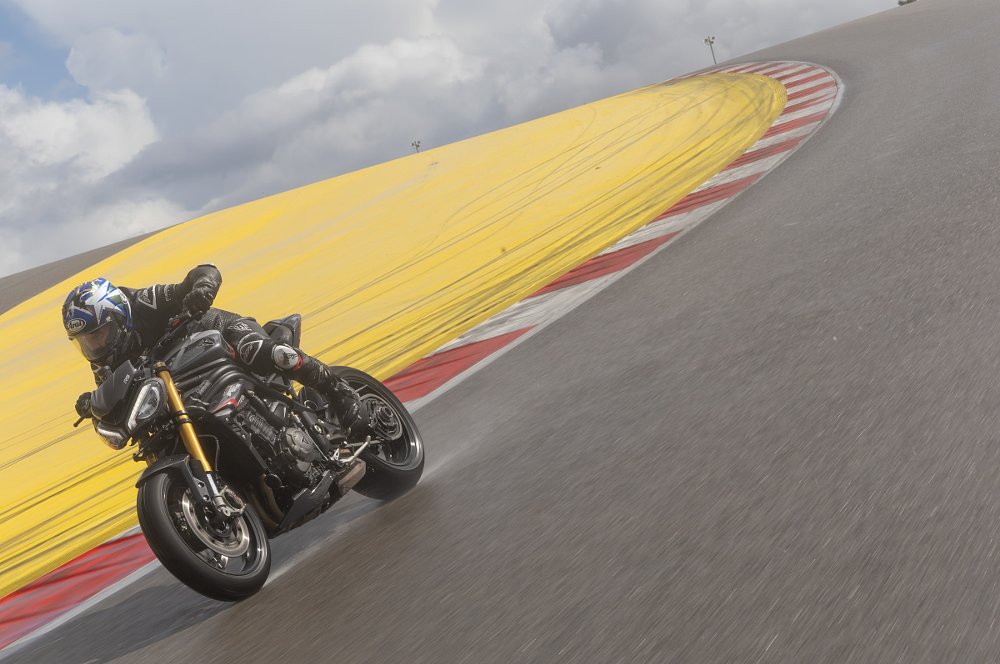
The thing with all of this is, in a strange way, the inclement conditions which us Brits are so used to allowed us to get a feel for the new refinement in the electronics and suspension on this second-generation Speed Triple 1200 RS. Let me put it this way: If it was dry and hot, we'd have been too busy learning the track and getting lost in the settings to notice the finer details. That supple, premium suspension would've spent most of its time at the extreme ends of things, and we'd never have appreciated it in its fullest extent. It was a blessing that I didn't go fiddling with settings too much — I just rode it, exactly as most customers will do. In a way, it may have felt exactly like the first-generation did had conditions been dry. I think I could've missed the point entirely if it wasn't for the rain.
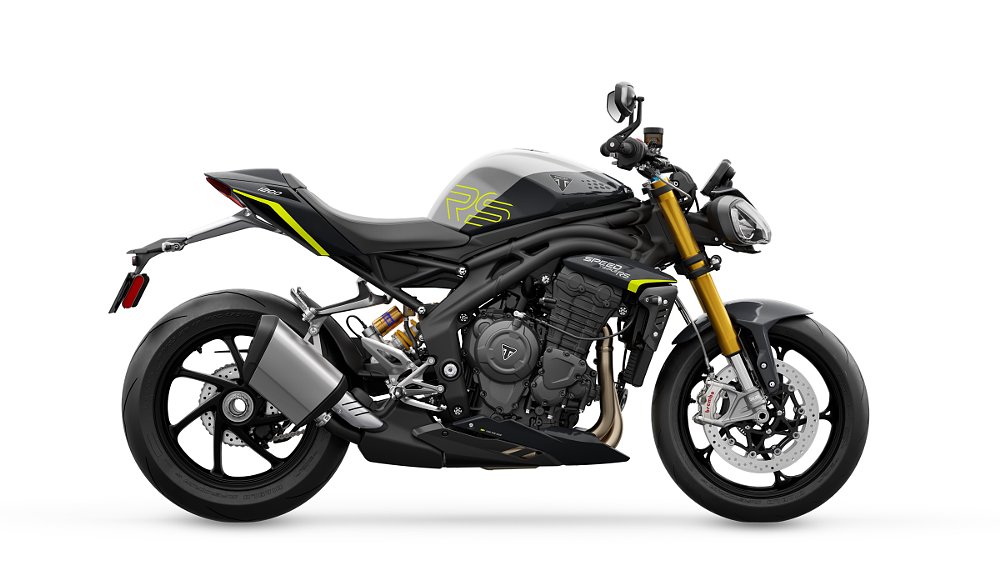
Given all that, I think Triumph has managed to make the Speed Triple 1200 RS what it should've been to start with. All it took was suspension that made sense, and the rest is icing on the cake. Imagine, for a minute, yourself riding the 1200 RS. Did your mind paint a picture of a Sunday countryside blast with a pub and a nice view afterwards, or did you envisage lap times, pit boxes, and one-piece leathers? Exactly, and now it all makes much more sense. Although, for the sake of completeness, we should revisit this bike in the dry. And by the way, you left the key fob in the kitchen.
| 2025 Triumph Speed Triple RS | |
|---|---|
| Price (MSRP) | $19,995 |
| Engine | 1,160 cc, liquid-cooled, 12-valve, inline three-cylinder |
|
Transmission, final drive |
Six-speed, chain |
| Claimed horsepower | 180.5 @ 10,750 rpm |
| Claimed torque | 94.4 foot-pounds @ 8,7500 rpm |
| Frame | Aluminum twin-spar, bolt-on aluminum sub frame |
| Front suspension | Öhlins 43 mm, fully adjustable inverted fork, SmartEC3 electronic damping adjustment; 4.72 inches of travel |
| Rear suspension | Öhlins RSU shock, SmartEC3 electronic damping adjustment; 4.72 inches of travel |
| Front brake | Brembo Stylema four-piston calipers, dual 320 mm floating discs with ABS |
| Rear brake | Brembo twin-piston caliper, 220mm single disc with ABS |
| Rake, trail | 23.9 degrees, 4.12 inches |
| Wheelbase | 56.89 inches |
| Seat height | 32.68 inches |
| Fuel capacity | 4.1 U.S. gallons (15.5 liters) |
| Tires | Pirelli Diablo Supercorsa SP V3, 120/70R17 front, 190/55R17 rear |
| Claimed weight | 438.7 pounds (199 kg) |
| Available | Now |
| Warranty | 24 months |
| More info | Triumphmotorcycles.com |













